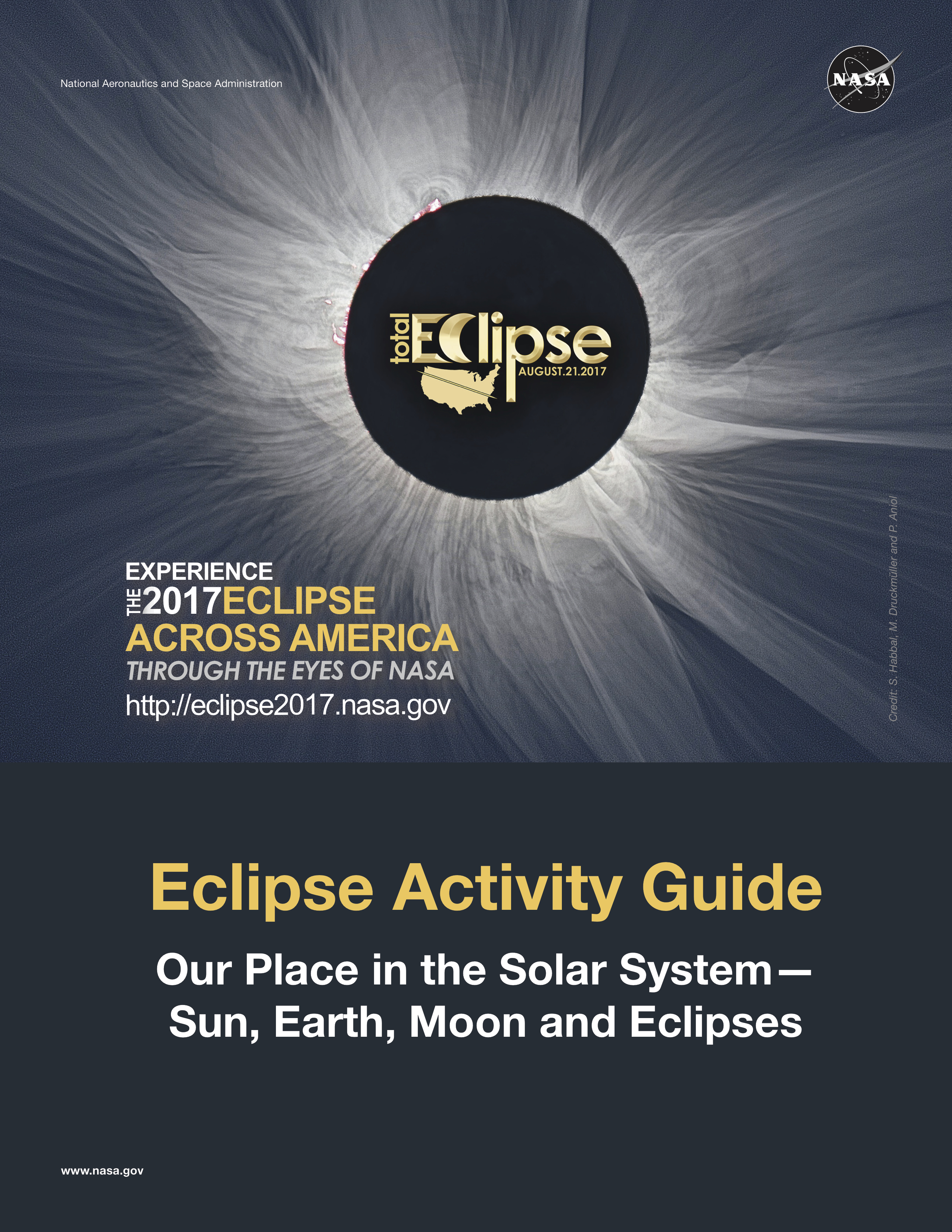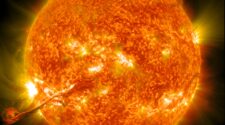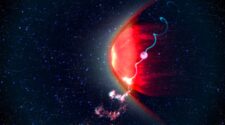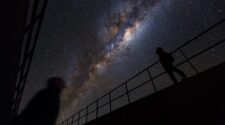A Total Solar Eclipse is a once in a lifetime event for most people and often occurs in a very specific area for just a short period of time. For the first time in a very long time the USA will experience a Total Solar Eclipse across the entire country from the West Coast to the East Coast. Indeed the entire continent of North America will experience some form of eclipse
There will be a relatively narrow band of totality (where the sun is completely covered) and a wider band of partial eclipse. The area of totality is centered on a curved line that runs from Depoe Bay in Oregon through to Cape Island, in South Carolina. The closer you are to the centre line the longer you will experience the total eclipse. The most northern parts of New York State and Southern areas of Texas will have a partial eclipse with over half the Sun covered by the Moon.
What is an Eclipse
An eclipse occurs when the Moon passes between the Sun and the Earth. There are three different types of eclipse: Partial Eclipse, Annular Eclipse, and Total Eclipse.
A Partial Eclipse is when the Moon covers up part of the Sun, but does not cover the entire Sun. Quite often during a Partial Eclipse it does not get significantly darker and you may not notice the event occurring. The closer you are to the area of totality, the darker it will appear to get. A Total Eclipse is always preceded by a Partial Eclipse.
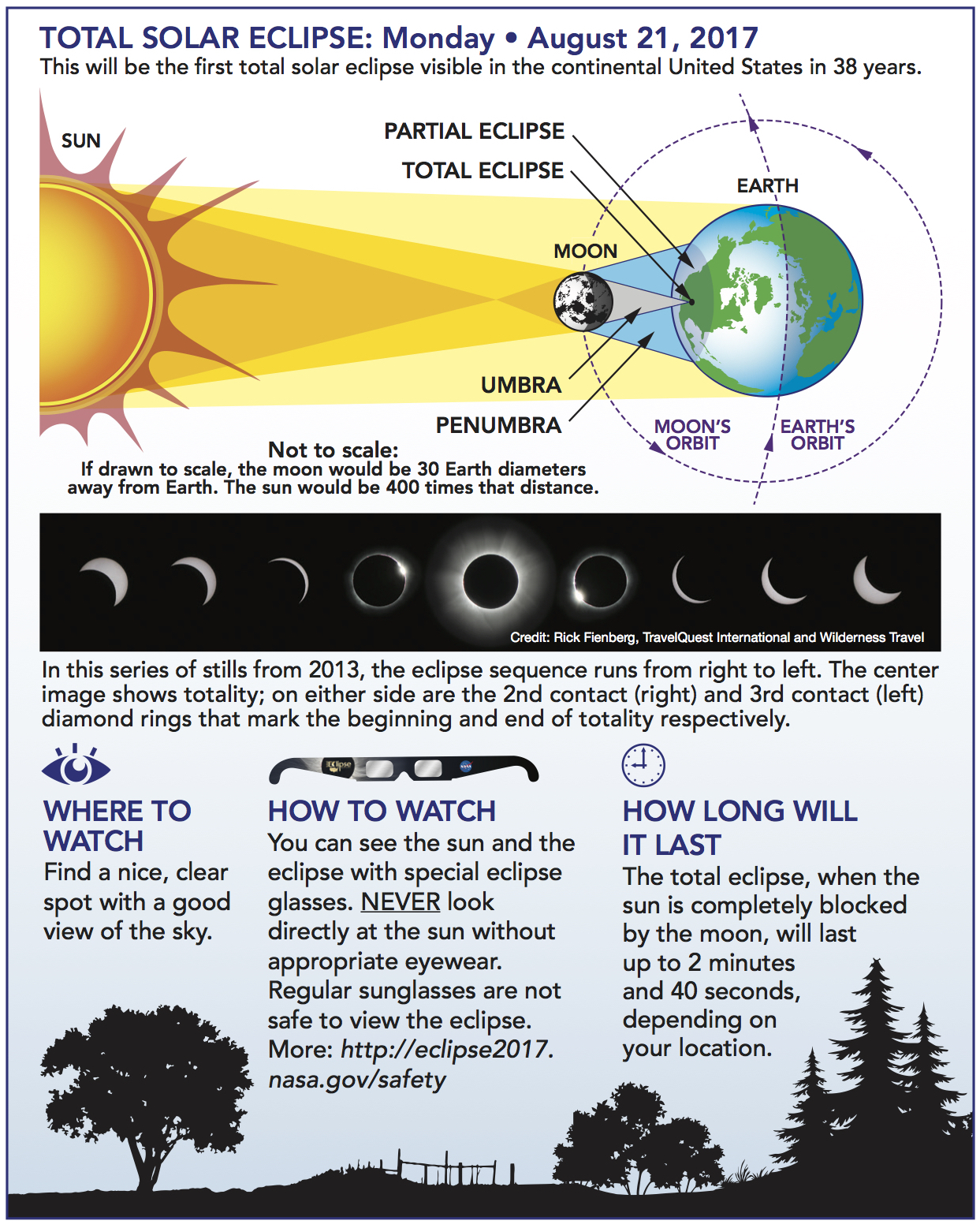
An Annular Eclipse happens the the Moon covers the Sun but the moon is at a distance away from the Earth where the Sun is not completely covered. This creates a ‘ring of fire’ around the moon. During an annular eclipse it will get significantly darker like twilight but not go completely dark. This will often confuse birds into thinking that the Sun has set.
A Total Eclipse occurs when the Moon totally covers the Sun, as will happen on the 21st of August. During the period of totality it is safe to view the eclipse without any special equipment and the Sun’s corona can bee seen. It will be almost completely dark, and birds will fall silent. You will be able to see some of the brightest stars, depending on the time of the eclipse in your area they will often be stars that you would not normally see. Leading up to the total eclipse you will experience a partial eclipse as the Sun is gradually obscured by the Moon. One special effect of a total eclipse is the ‘Diamond Beads’. This is created at the beginning and end of the total eclipse when some sunbeams are seen through the mountains of the moon which create this diamond effect. A total eclipse will only last for a few minutes depending on the proximity to the center line and the distance the Moon is from the Earth.
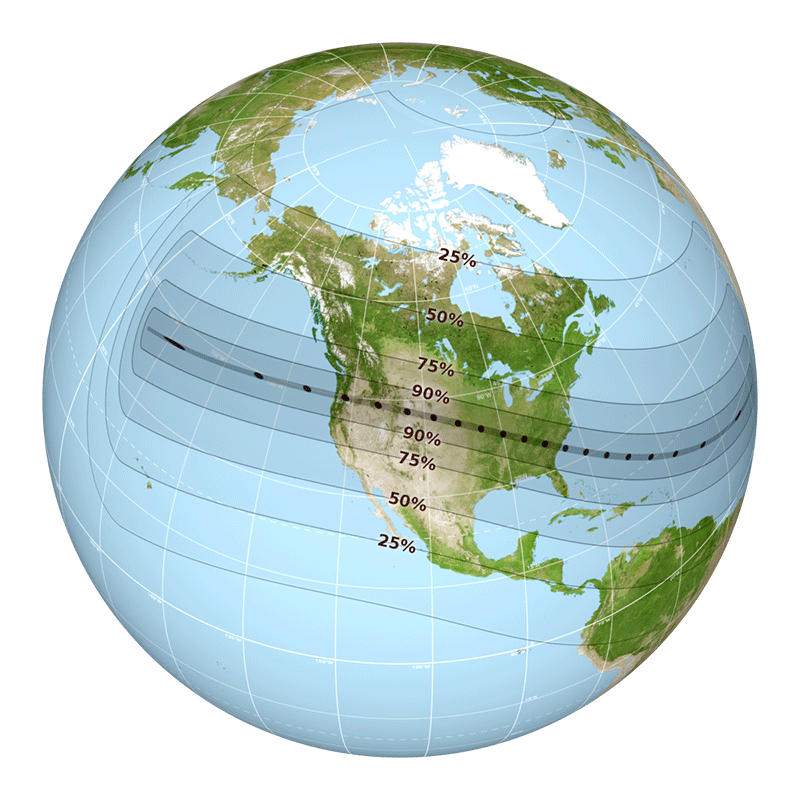
Where to view the August Eclipse
On the 21st August a total eclipse will race across the entire United States of America. In an event lasting just over 90 minutes a swathe of the country will be blacked out as the shadow of the Moon plunges it into darkness.
The 2017 total eclipse will have its longest duration of 2 minutes 40 seconds near Marion, IL. Where it reaches land off the coast of Oregon the totality will last 1 minute 58 seconds, and 2 minutes 34 seconds where it leaves mainland USA at Cape Island, SC. Landfall totality occurs at 10:15am Local time in Oregon and ends at 2:49pm in South Carolina. Due to the timezone variations it is important to check the timings for your locality. NASA has produced an interactive Google Map to assist you with your planning at https://eclipse2017.nasa.gov/sites/default/files/interactive_map/index.html
There is little practical difference for viewing the eclipse at any point across the path in terms of duration as a full eclipse will be seen wherever you go. This means then that the major considerations become weather and accessibility. The path of the Eclipse sweeps across the USA from West to East passing through many easy to access locations. As the eclipse is happening in August this coincides with stormy tropical weather often experienced in the South-East of the country. With this in mind it is probably best to select a location as far to the west as possible. It would also be advisable to stay some miles inland from the Pacific Coast to avoid the possibility of any off-shore rain and costal fog that can occur at this time.
The ideal location would probably be Jackson or Casper in Wyoming but these can be quite difficult to get to and have little accommodation. A more practical place to make a base could be Kansas City, and then drive further in towards the center of the path. Kansas City itself will experience totality for about 43 seconds.
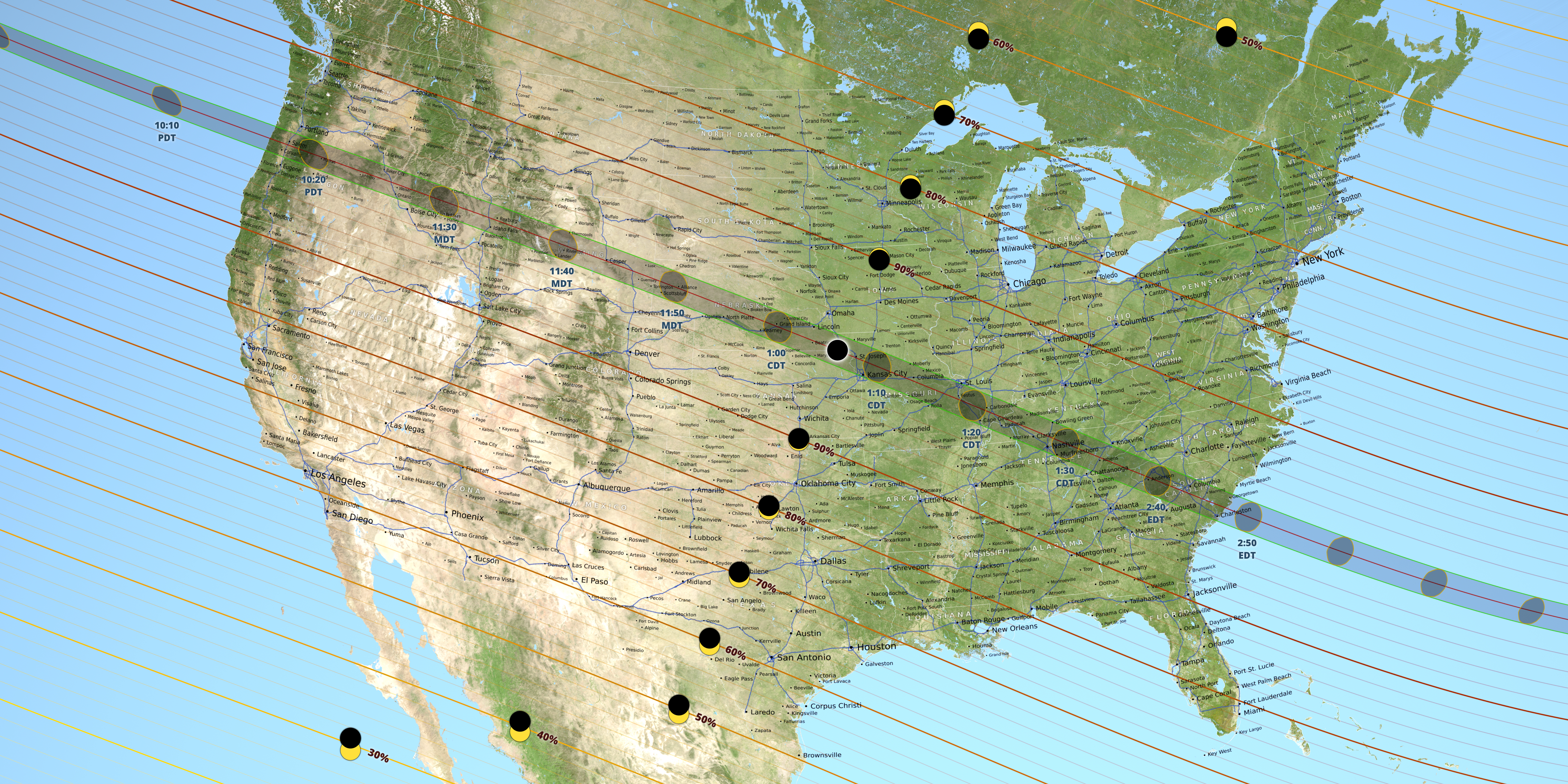
How to view an Eclipse
IMPORTANT: NEVER LOOK AT THE SUN WITHOUT PROPER FILTERED GLASSES
To view an the eclipse you first of all need to be in the right place (see above for more information). You need to select a place where you will be in the area of totality. The closer to the center line the better as the totality will last longer.
You will need a pair of special glasses fitted with Solar Filter material. This will block 99.9% of the Sun’s light and allow you to look directly at the sun. You must put your glasses on before turning towards the Sun. Note that sunglasses and Welder’s masks are not suitable.
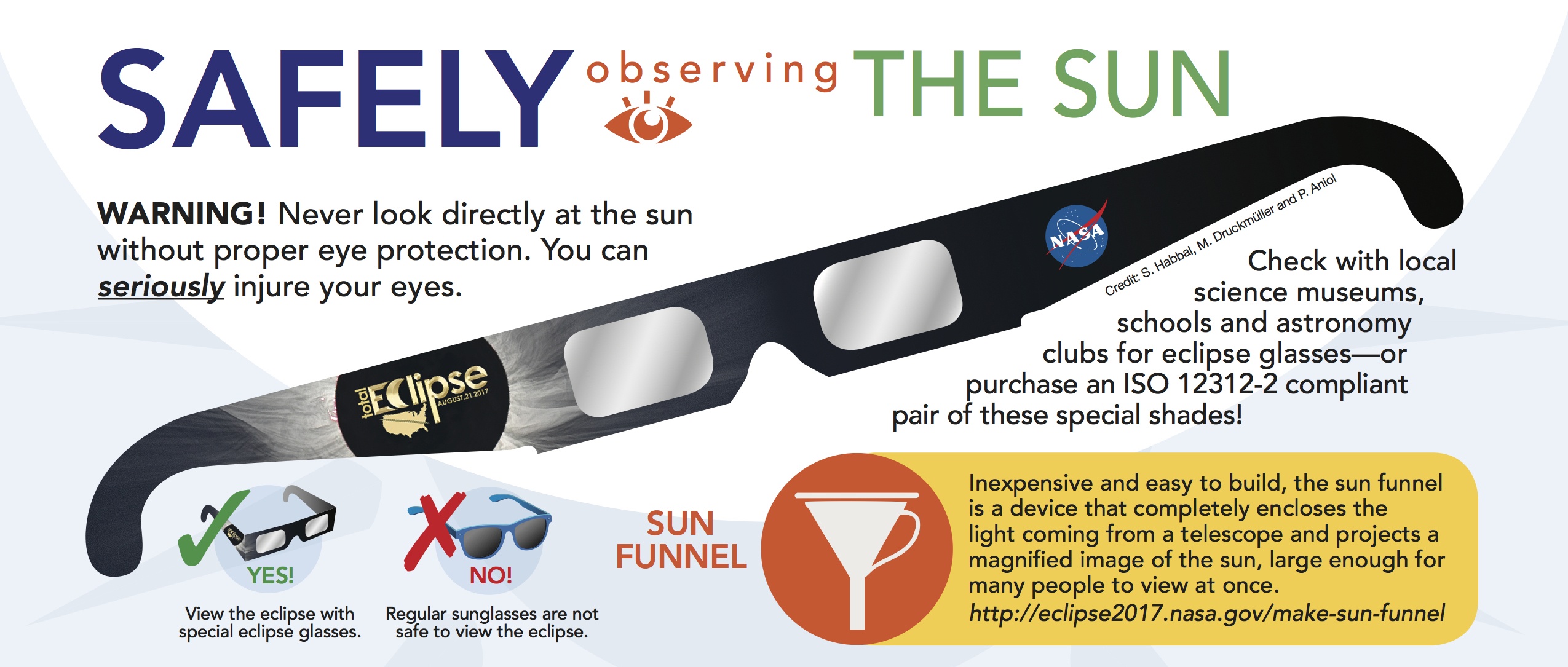
If you are using binoculars or a telescope then you must use Solar Filters on each lens that points at the Sun (including finders). This is even more critical than using the eclipse glasses as these instruments magnify the power of the sun and will do serious damage to your eyes. It is always good practice to ensure that the area around the eyepiece is also shielded to avoid accidental exposure to the sun.
As the Moon starts to cover the Sun and it starts to get darker and you will be able to see a crescent starting to form. This partial eclipse will happen about 30 minutes or so before totality and the drop in light will not be obvious, but the eclipse will be visible. As more and more of the Sun becomes obscured it will get darker and darker. There will come a point when the ‘diamond beads’ can be seen after which it will be totally dark.
Once the beads have gone it is safe to take off the solar glasses to observe the Sun’s atmosphere or Corona. You now have to be very careful and know how long the total eclipse will last at your location. Even looking at the diamond beads without protection can damage your eyes. It is important to look away from the sun or put your glasses or filters back on before these beads re-appear.
Check out NASA’s advice for eye safety at https://www.nasa.gov/content/eye-safety-during-a-total-solar-eclipse
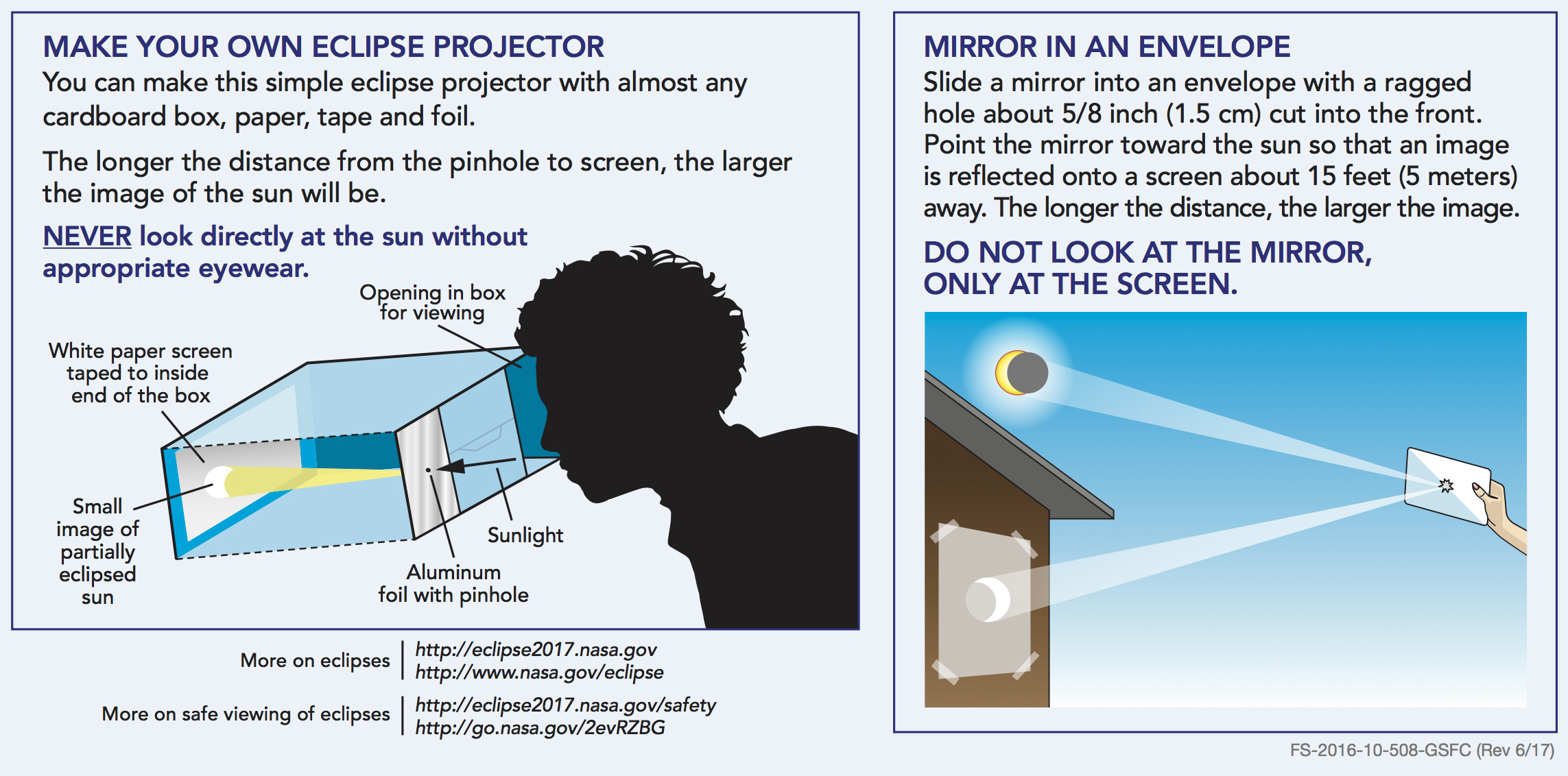
How to image an Eclipse
Imaging an eclipse is much like viewing it but with added complications. The main difficulties are:
- Finding the sun in the Camera
- Focusing the lens/telescope
- Setting the correct exposure
It may sound strange, but locating the Sun in the optics is probably the most difficult part of the process. The sun always seems huge, but when you remove the glare and have a filter on that cuts out most of the light entering the optical chain it really becomes quite small. For a camera with a zoom lens this is somewhat easier as you open up the zoom to the widest setting then using live view start to center the Sun in the viewfinder as you zoom in.
If you have a fixed zoom lens or a telescope then this process can be quite difficult. It is possible to buy a Solar Finder that acts in a manner similar to a sun dial in that you adjust the position of the telescope / lens until you have no shadow on the finder. The Sun should be in the field of view at this point.
Focusing can be a bit tricky as well. You should always use manual focusing as there will not be enough contrast for the autofocusing system to work. A good tip is to focus on the moon or stars and leave the telescope at that setting. If you cannot do that then focus on the furthest thing you can see. Once the Sun is in view it will just be a matter of fine tuning the focus to get the sharpest image. Focusing can be done at any time leading up to the eclipse once the sun has risen.
Getting the exposure correct is also a challenge. This should also be done manually. As you get closer to the correct exposure the Sun will appear to get smaller and the focusing can be fine tuned. Correct focusing will also reduce the apparent size of the Sun as well. If you are lucky there will be some sunspots on the Sun that will allow you to both achieve perfect focus and exposure. The beauty of the focus and exposure process is that it can be done at any time. You do not need to be in the phases of the eclipse to get these sorted.
As the Moon starts to move over the Sun the exposure will need to be adjusted to cater for the diminishing light. It is always best to shoot in raw mode as this gives some leeway if the exposure is not quite right.
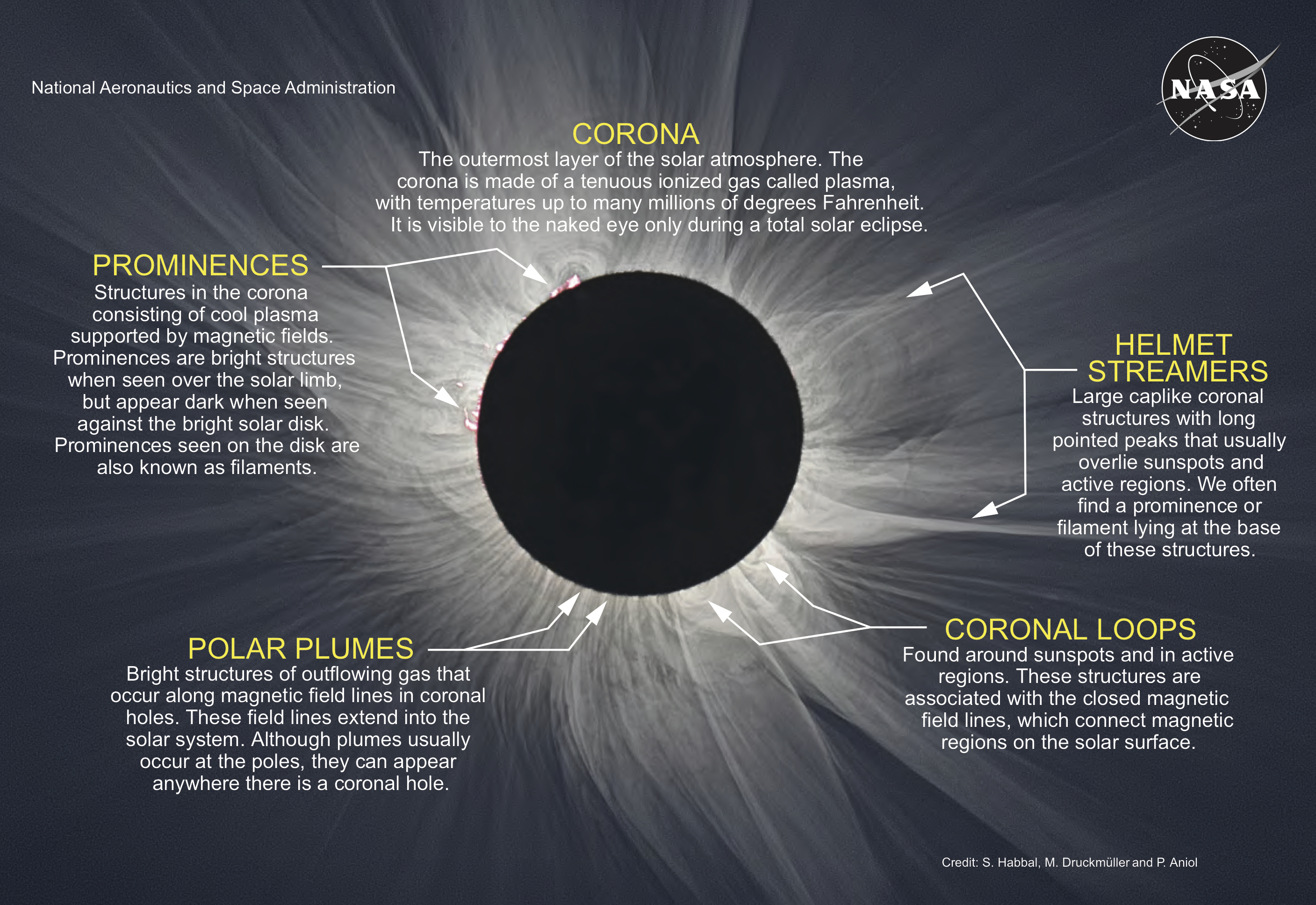
When the diamond beads have disappeared and the period of totality has started then you can remove the filter and rapidly adjust your exposure to capture the corona. Again this will be a case of trial and error, but you will have about two minutes (if you have a prime location) to get the exposure correct.
As with visual observing you will need to replace the filter before the diamond beads start to reappear. Failure to do so could ruin your equipment. You would then reset the exposure to the same setting you had before removing the filter and continue imaging.
Warning!
Happy Eclipse Chasing, but remember: Viewing the Sun for even a fraction of a second can seriously damage your eyes or equipment. Please be very careful on the 21st August.

